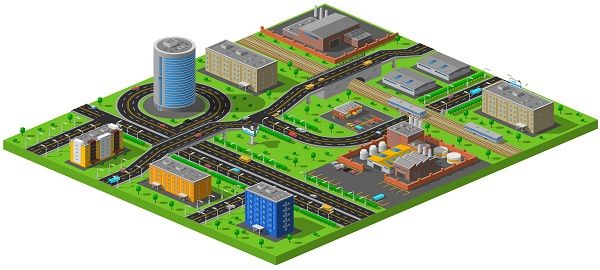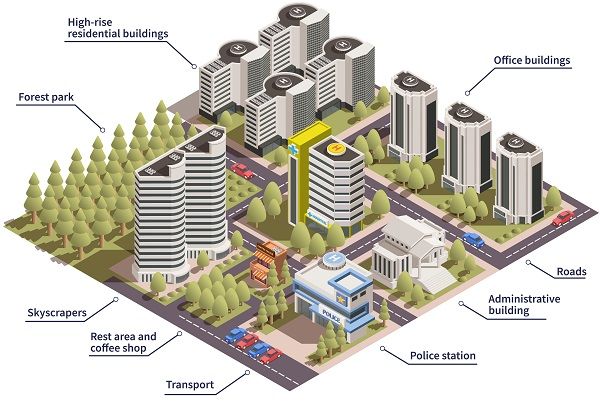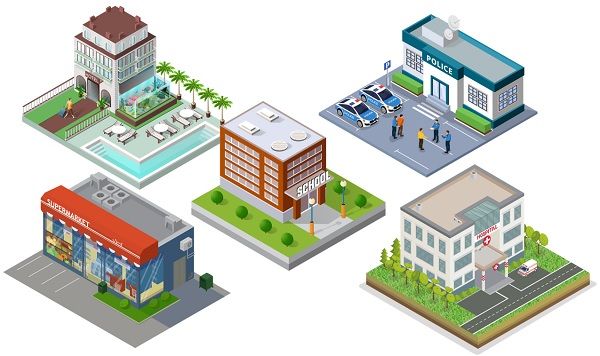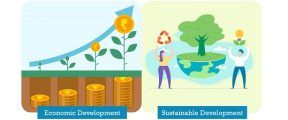 Infrastructure is primarily classified into economic and social infrastructure. Economic Infrastructure is one that contributes to promoting economic activities. This may include highways, telecommunication, electricity etc.
Infrastructure is primarily classified into economic and social infrastructure. Economic Infrastructure is one that contributes to promoting economic activities. This may include highways, telecommunication, electricity etc.
On the contrary, social infrastructure is one that assists in the promotion of education and health-related standards.
Investment in the infrastructure of the country is one of the important drivers of economic development. This is because it is pertinent for the smooth functioning of the economy. The rise in expenditure on various sectors indicates the government’s commitment towards economic and social well-being. The primary determinants of stable economic and social development, leading to rapid economic growth include:
- Efficient institutions
- Effective regulations
- Proper pricing
- Adequate investment
- Precise targeting
Meaning of Infrastructure
Infrastructure implies the basic physical and organizational structure created to provide various services in an economy for a long period of time. It does not directly produces goods but it supports and promotes production activities in an economy.
Roads, telecommunication systems, dams, power stations, pipelines, universities, schools, ports, canals, banks and insurance companies, etc. all come under infrastructure.
Infrastructure indicates the wheel of economic progress. In simple words, it is the system of public work which supplies public utility services. If the infrastructure is good, it increases productivity and reduces the cost of production. All we could say here is that there is a clear relationship between infrastructure and development.
In this post, we have explained the difference between economic and social infrastructure.
Content: Economic Vs Social Infrastructure
- Comparison Chart
- What is Economic Infrastructure?
- What is Social Infrastructure?
- Key Differences
- Conclusion
Comparison Chart
| Basis for Comparison | Economic Infrastructure | Social Infrastructure |
|---|---|---|
| Meaning | Economic Infrastructure encompasses services that influence production and distribution directly. | Social Infrastructure encompasses services that add value to the economic process indirectly. |
| Support for the economic system | Direct | Indirect |
| Increases | Scale of Production | Efficiency of manpower |
| Expenditure | Increases stock of physical capital | Increases stock of Human Capital |
| Improves | Quality of economic resources, which in turn increases the level of production. | Quality of human resources which in turn enhances the efficiency of the workforce. |
| Example | Transport, Communication, Banking, Power, Marketing etc. | Health, Education, Sanitation, Housing, etc. |
| Accelerates | Process of economic growth | Process of human development |
| Supports growth | In short run | In long run |
| Essential for | Development and prosperity of the country. | Social welfare and well-being of the society. |
What is Economic Infrastructure?
Economic Infrastructure means all those elements of economic change that act as a foundation in the process of economic growth. It has a very crucial role to play in the growth performance of various nations. It is necessary for improving the productive capacity of the nation. In short, it implies various facilities and support systems that act as a primary source in accelerating economic development.
It can be found within the system of production and distribution. This is because, it is directly associated with the needs of production sectors like agriculture, industry and trade. Further, it indirectly increases the productivity of various factors. However, the impact can be seen in the economy immediately.
The alternative term for economic infrastructure is Physical Infrastructure. It covers financial infrastructure, energy, utilities, transport and communication.
Example
- Energy is an important component of economic infrastructure. Further, it is a fundamental resource in the absence of which the existence of human beings is impossible.
- The transport sector includes roadways, waterways, railways, airways, etc. which also contributes to economic development by increasing connectivity.
Also Read: Difference Between Economic Growth and Economic Development
What is Social Infrastructure?
Social Infrastructure implies those overhead facilities and support systems that help in the process of economic development indirectly. This is because it contributes to the improvement in productivity. It builds the social system of the country which aims to concentrate on human resource development, i.e. human capital formation. It mainly relies upon public fees and taxes.
Social Infrastructure covers educational facilities, courts, stadiums, sewerage, healthcare facilities and other social facilities. Such services are consumed by the human resources directly but they support the production of goods and services indirectly.
Example
- Education increases the knowledge and skills of labour, which helps them learn how to operate machines and various methods of production. This ultimately increases the productivity of labour.
- Health infrastructure ensures a healthy workforce.
By this, we can conclude that when there is a strong social infrastructure in the economy, there will be an increase in labour productivity. This will be shown in the improvement in the quality of life of the people. This will indicate the extent of human capital formation and human development.
Also Read: Difference Between Physical Capital and Human Capital
Key Differences Economic and Social Infrastructure
- Economic or Physical Infrastructure means the services that have a direct impact on production and distribution activities. In contrast, social infrastructure refers to the services which indirectly contribute to the progress of the economy. Meaning that these services influence the production and distribution system on an external level.
- The economic infrastructure supports the country’s economic system directly. On the other hand, the social infrastructure supports the country’s economic system indirectly.
- Physical Infrastructure ensures a rise in the level of production, i.e. it increases the overall output. However, social Infrastructure results in an increase in the efficiency of the labour force.
- While economic infrastructure increases the stock of physical capital. Social Infrastructures increase the stock of human capital.
- Economic Infrastructure improves the quality of economic resources, which ultimately helps in increasing the production level. Conversely, social infrastructure improves the quality of human resources, which leads to an increase in the efficiency of manpower.
- Physical Infrastructure results in an increase in the pace of economic growth. Whereas, social infrastructure improves human development.
- While social infrastructure supports growth in the long run. Physical Infrastructure results in growth in the short run.
- Economic Growth is necessary for the development and prosperity of the country, as it provides the means to increase the capacity of production. On the contrary, social infrastructure is necessary for social welfare and well being of society as it provides better living conditions to the members of society.
Conclusion
Above all, the socioeconomic development of an economy can be triggered by the existence of both economic and social c infrastructures. Both the infrastructure is important for carrying out basic economic activities in an effective manner. In fact for efficient working of the modern industrial economy, there is a need for a good economic as well as social infrastructure.








Leave a Reply